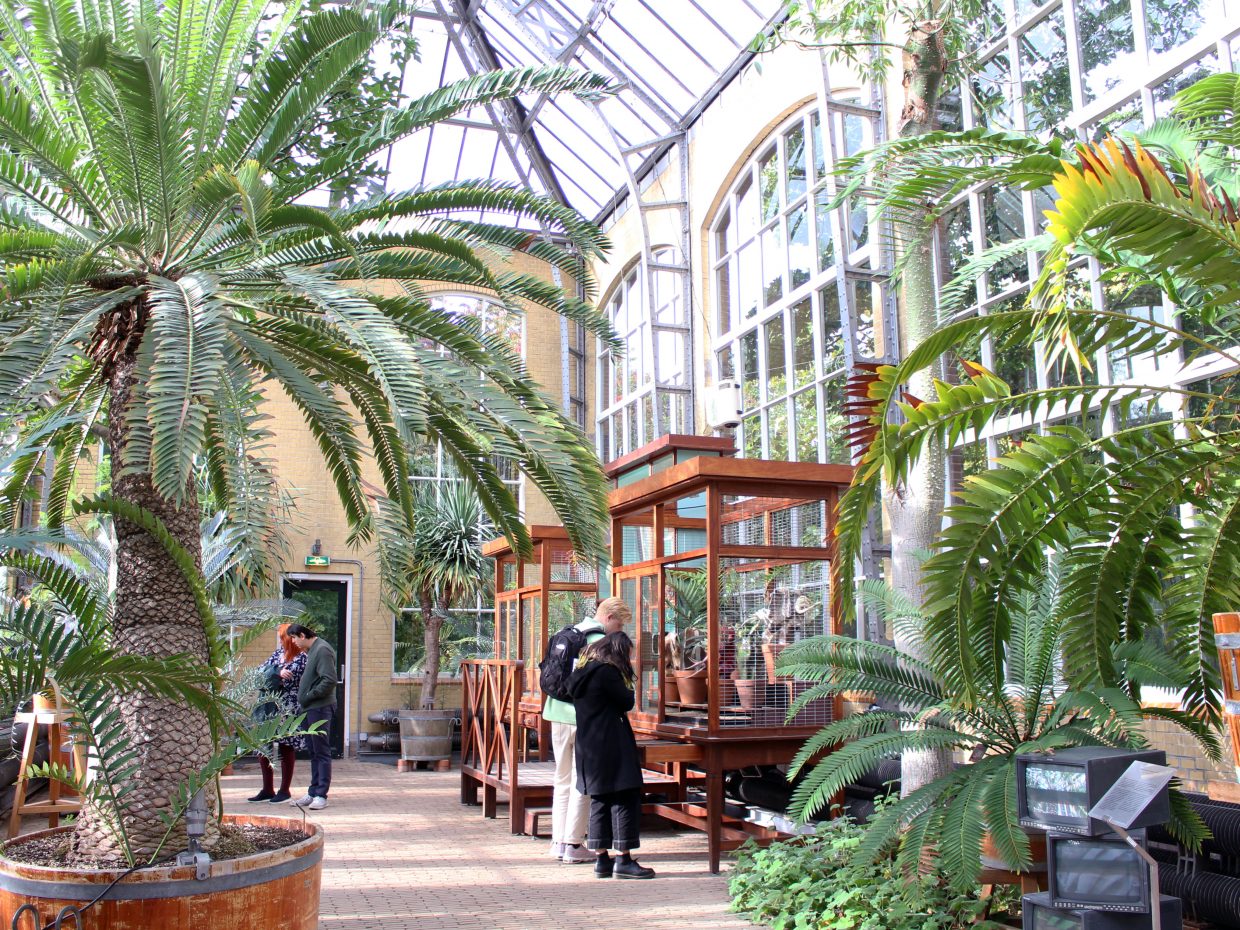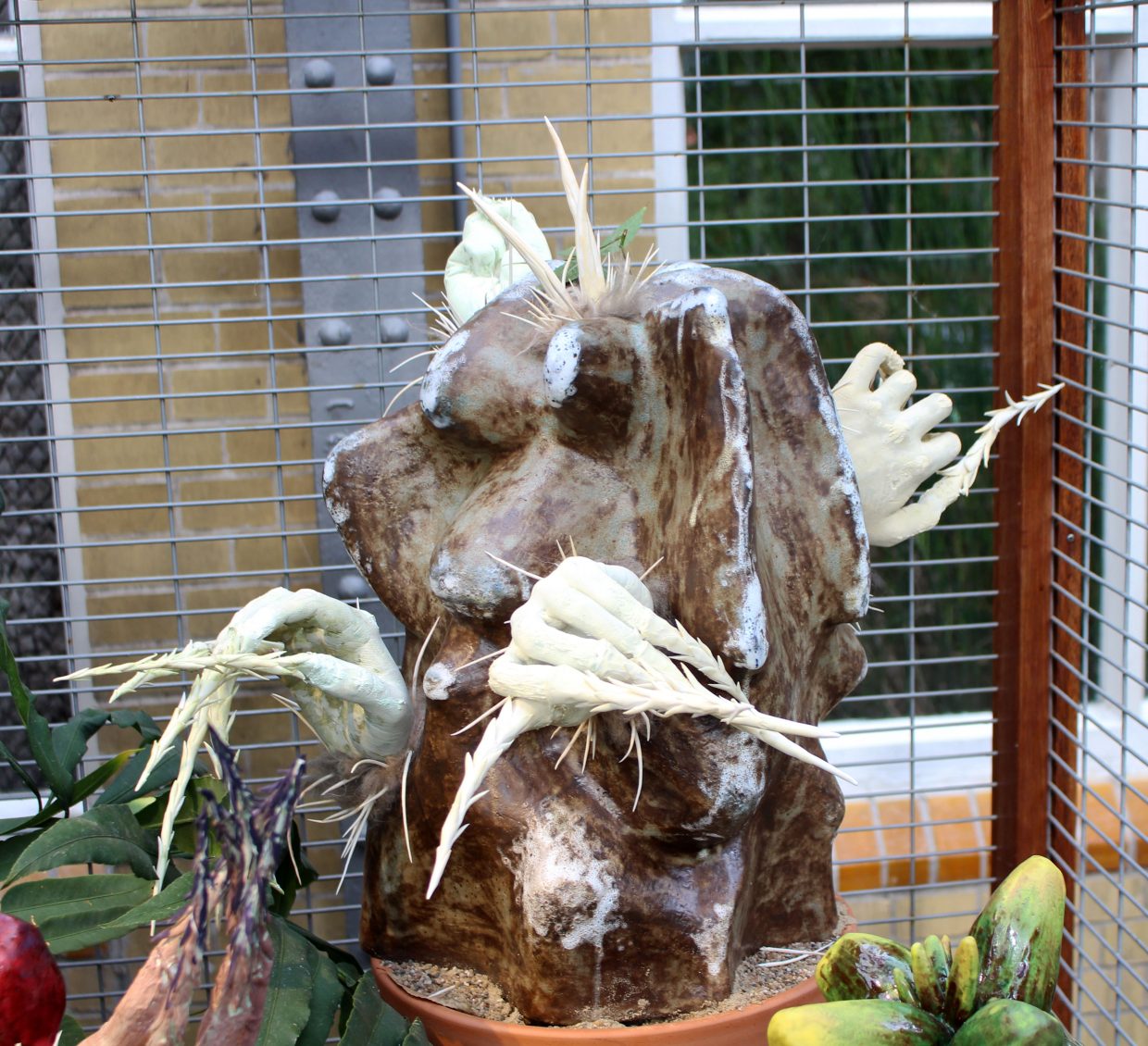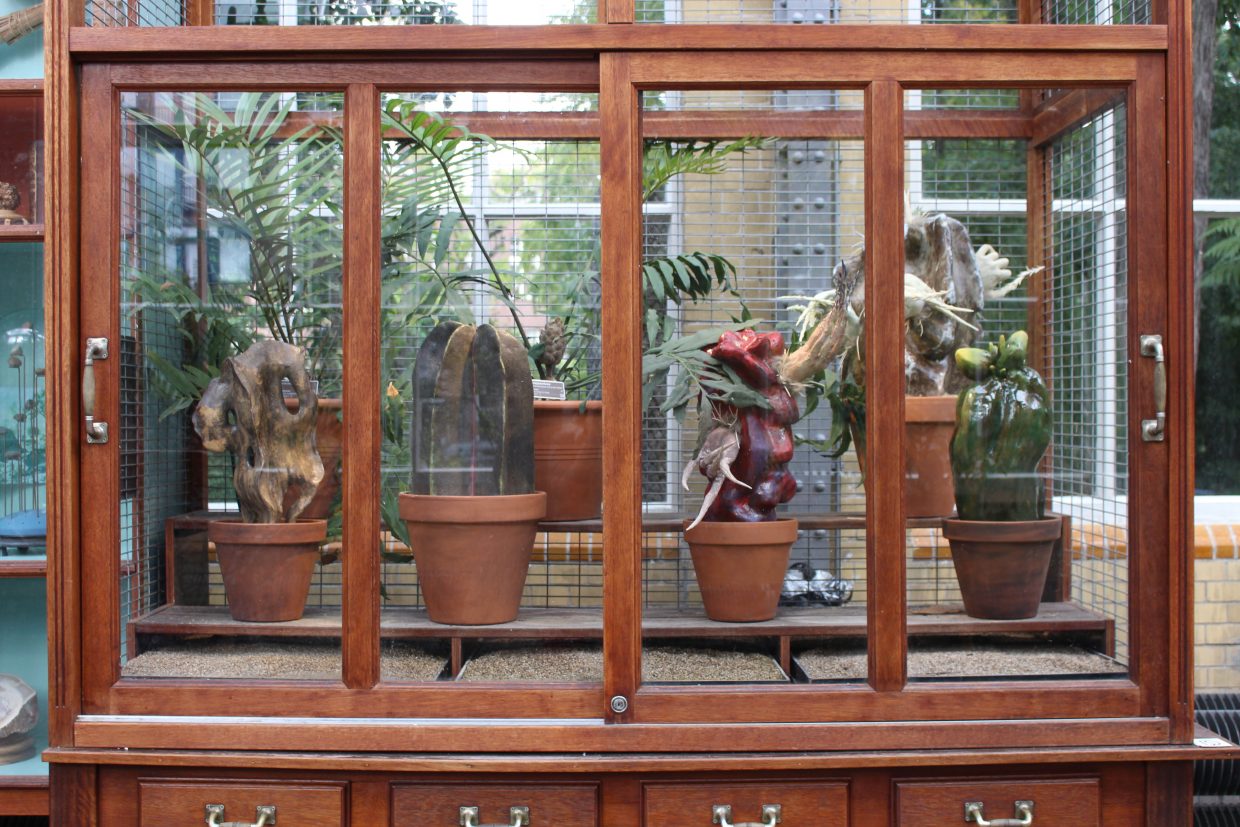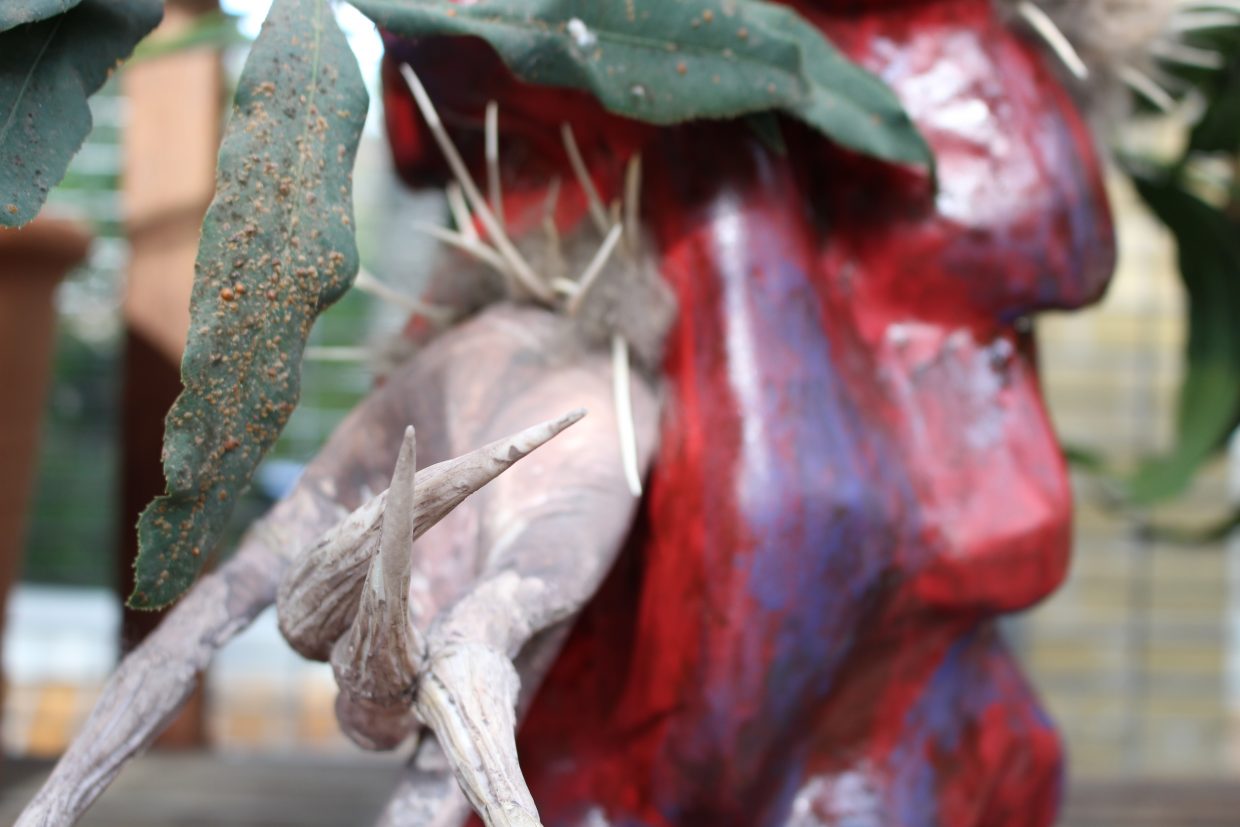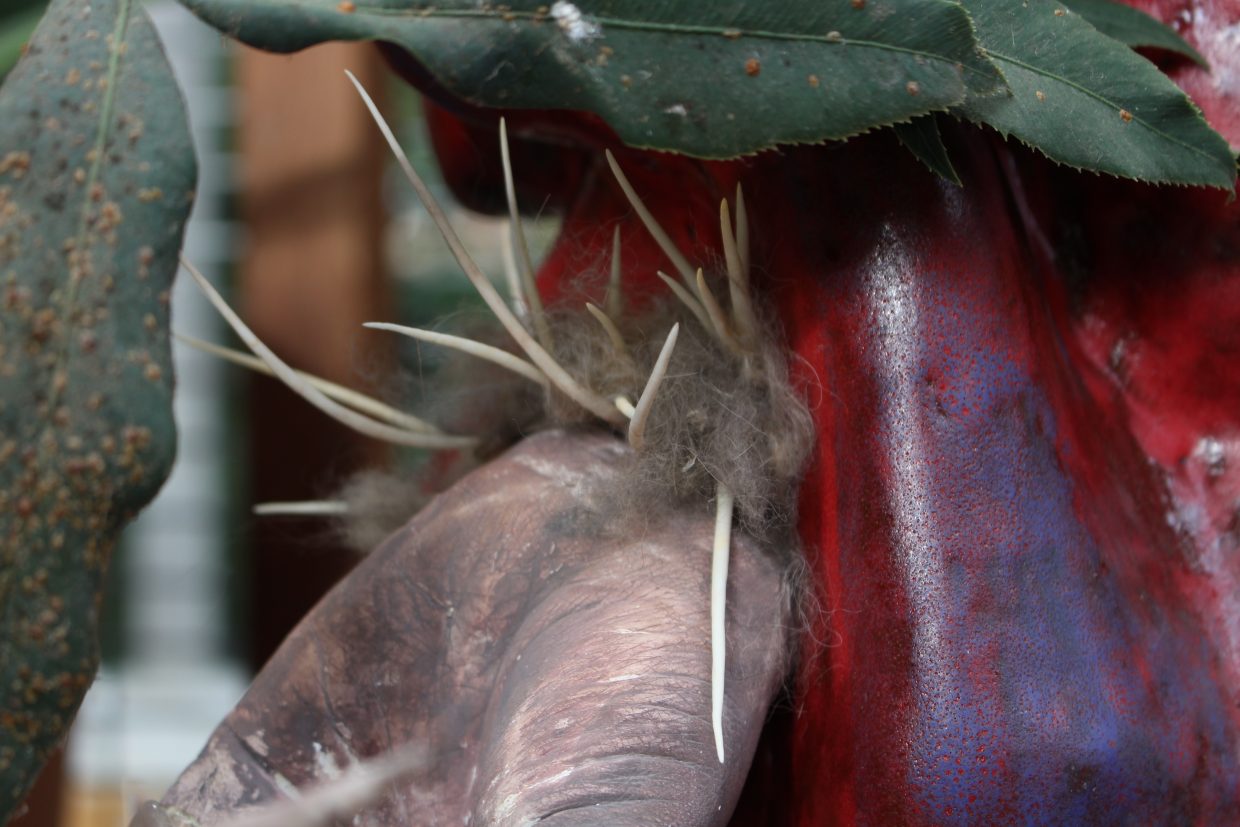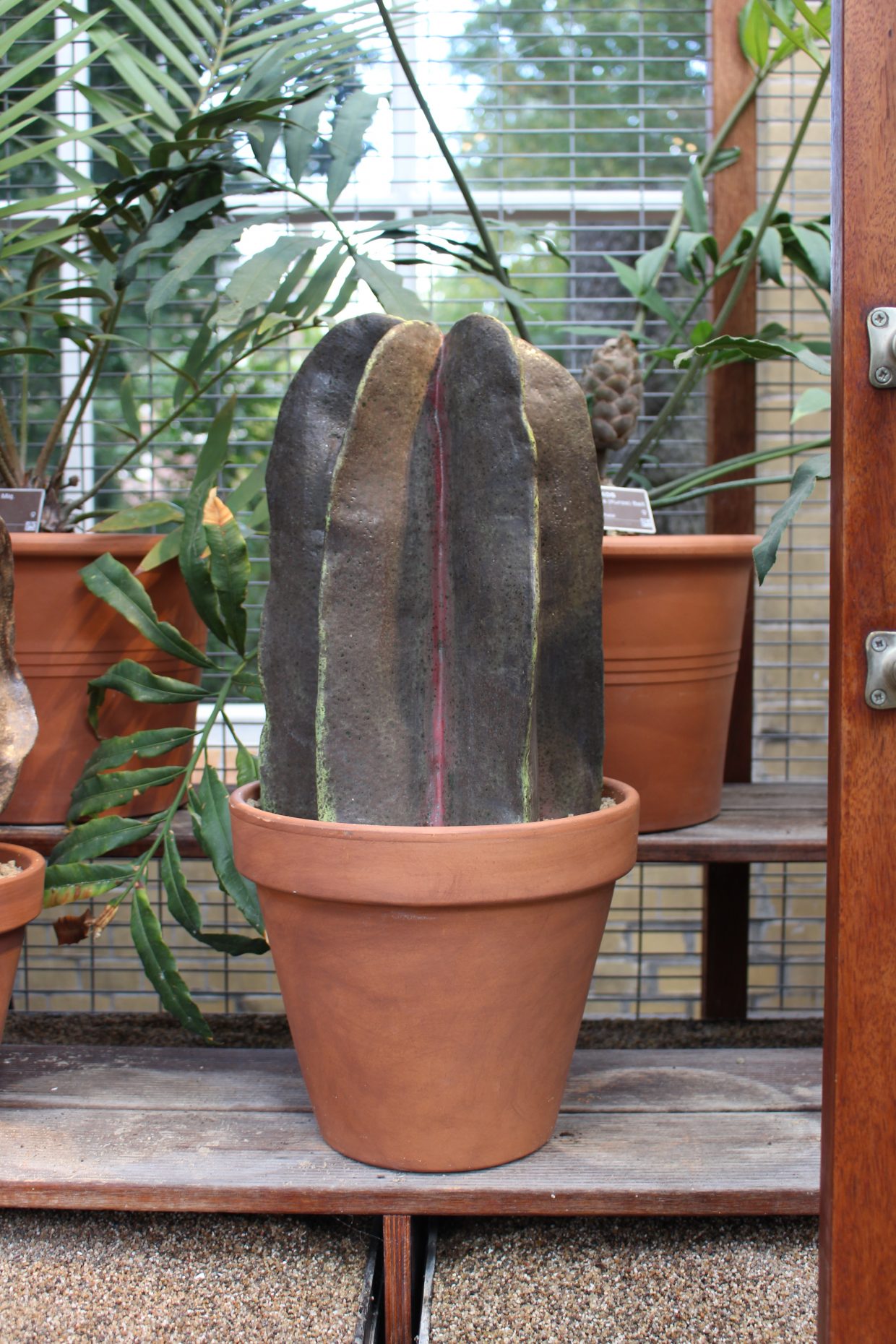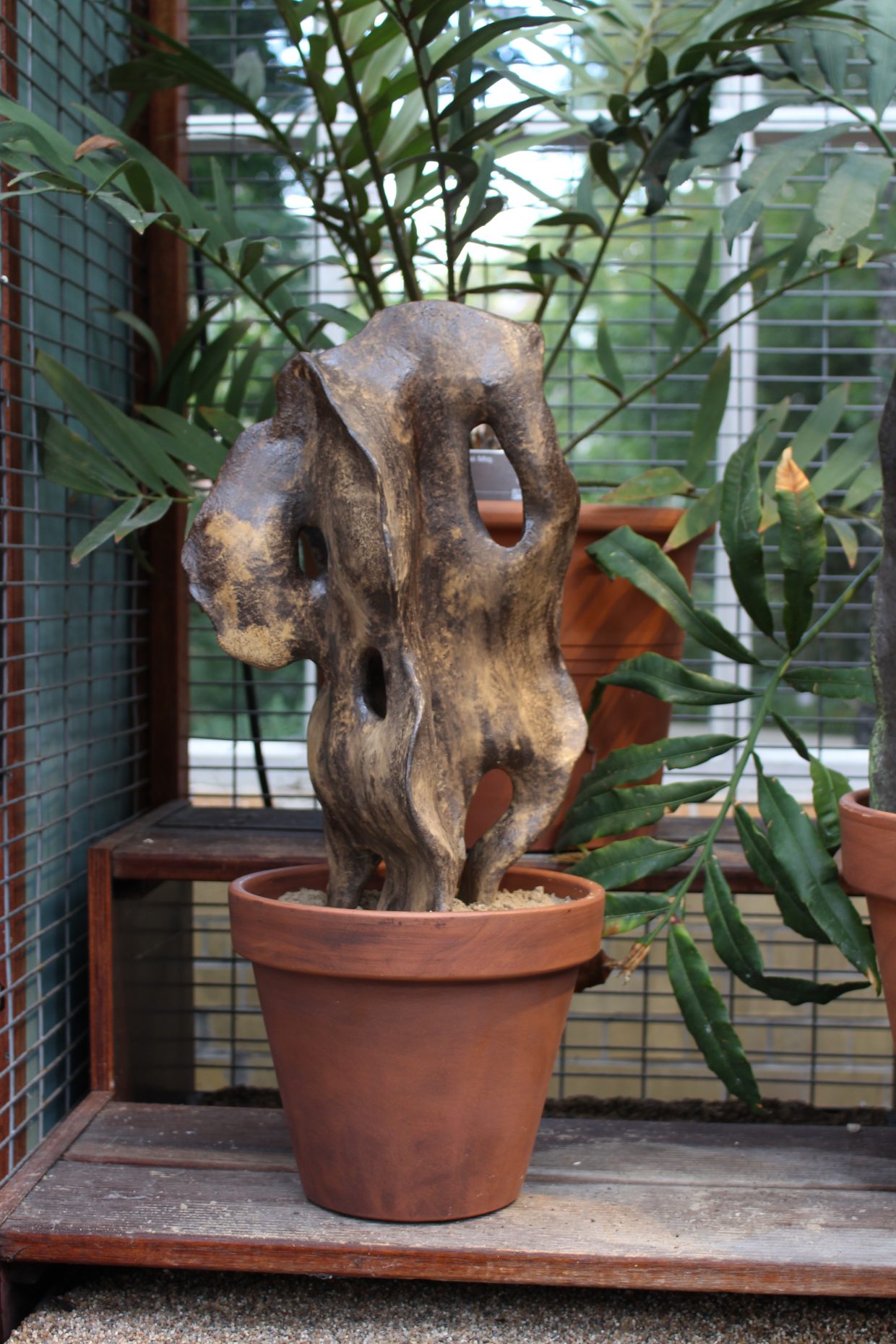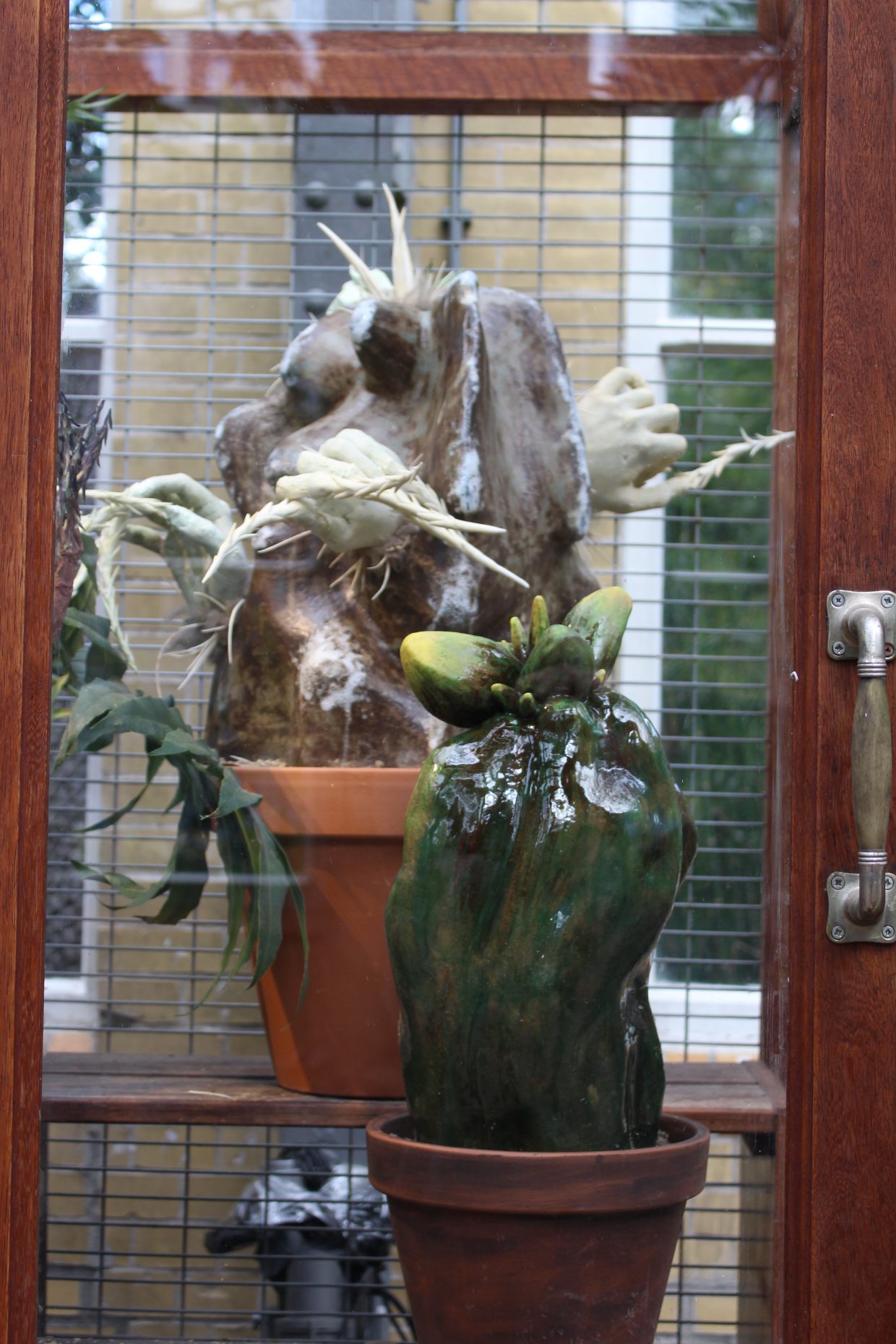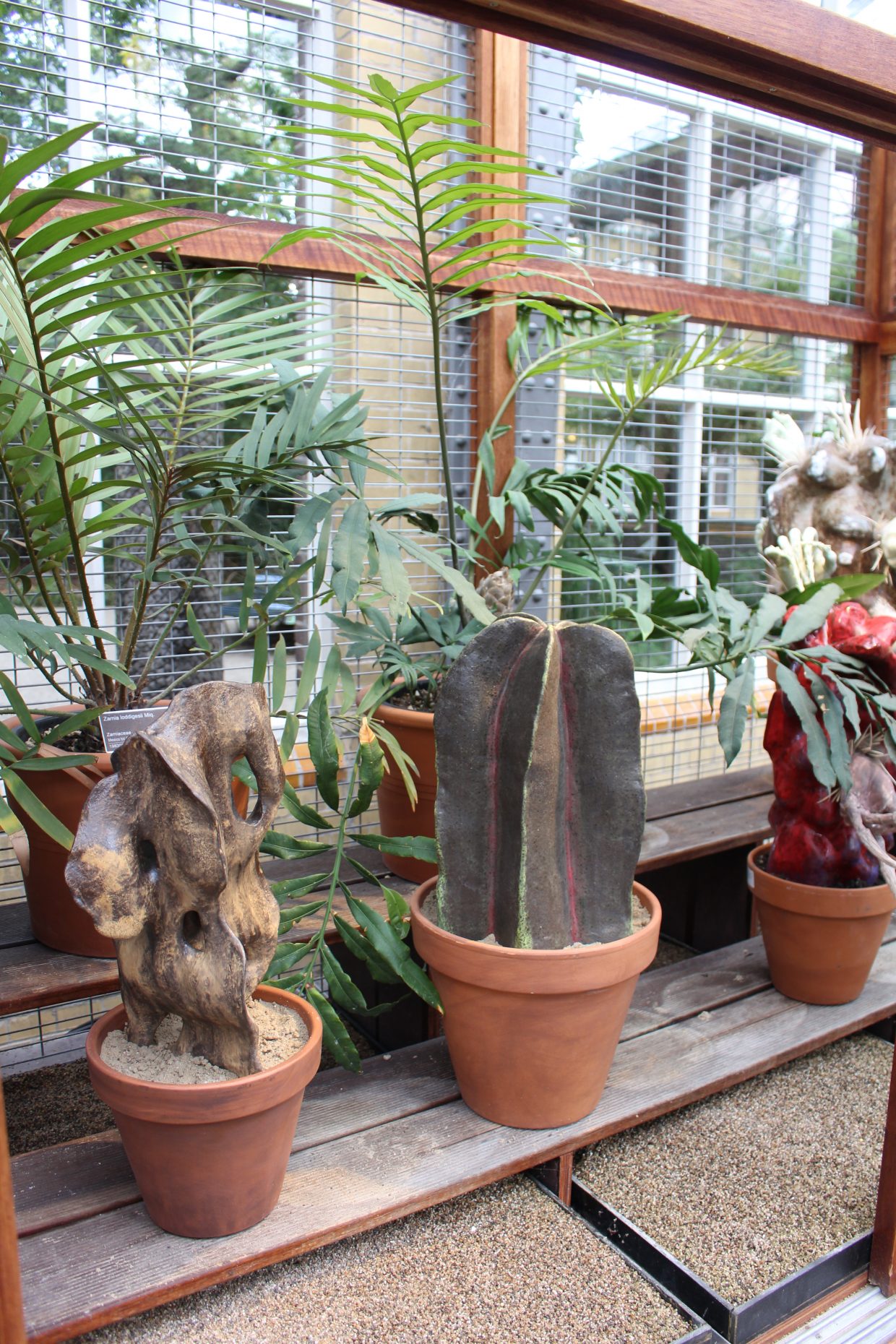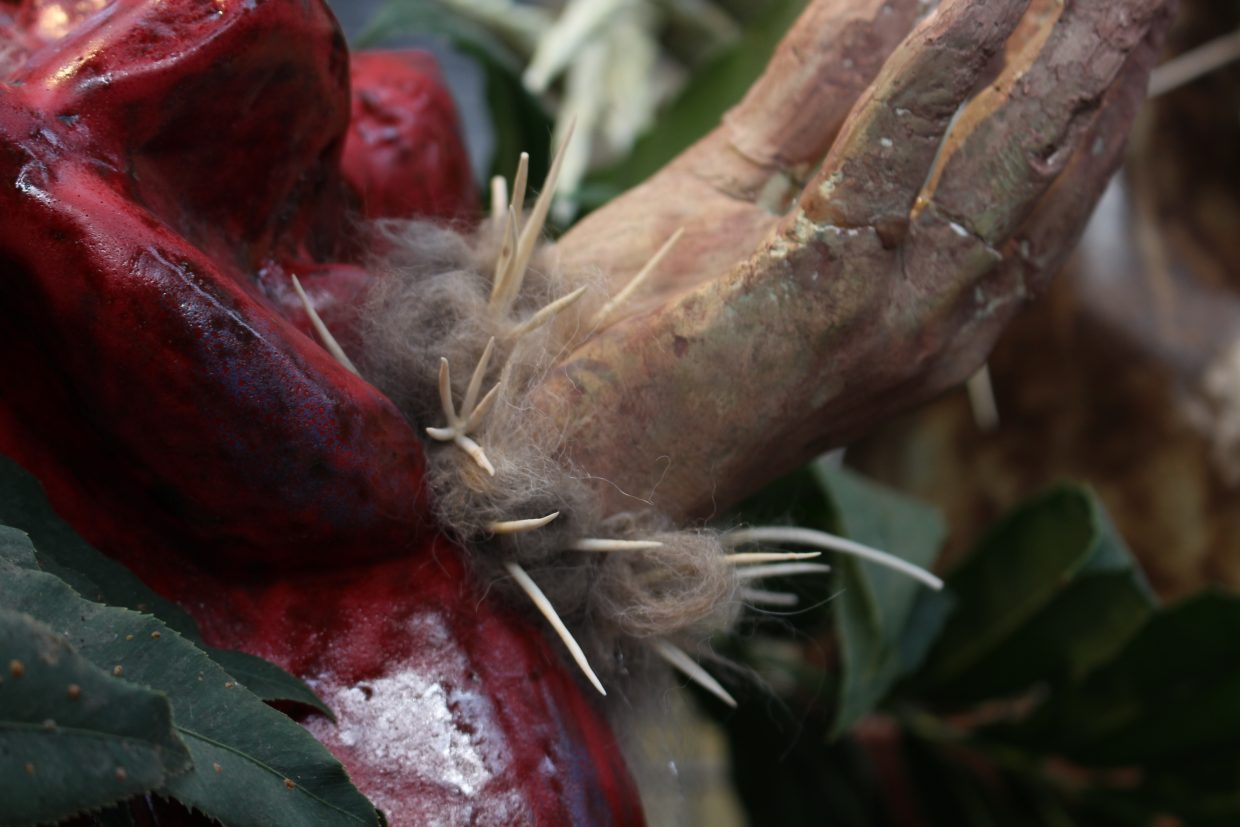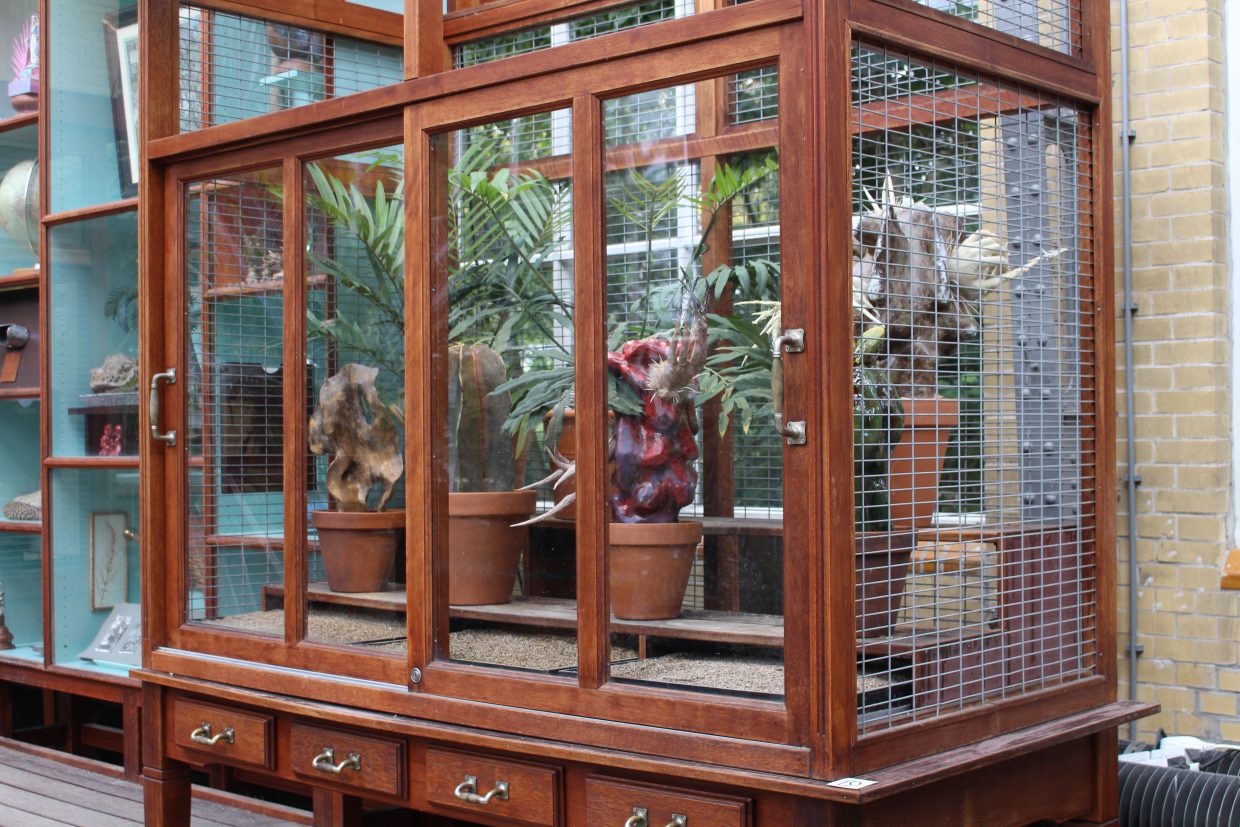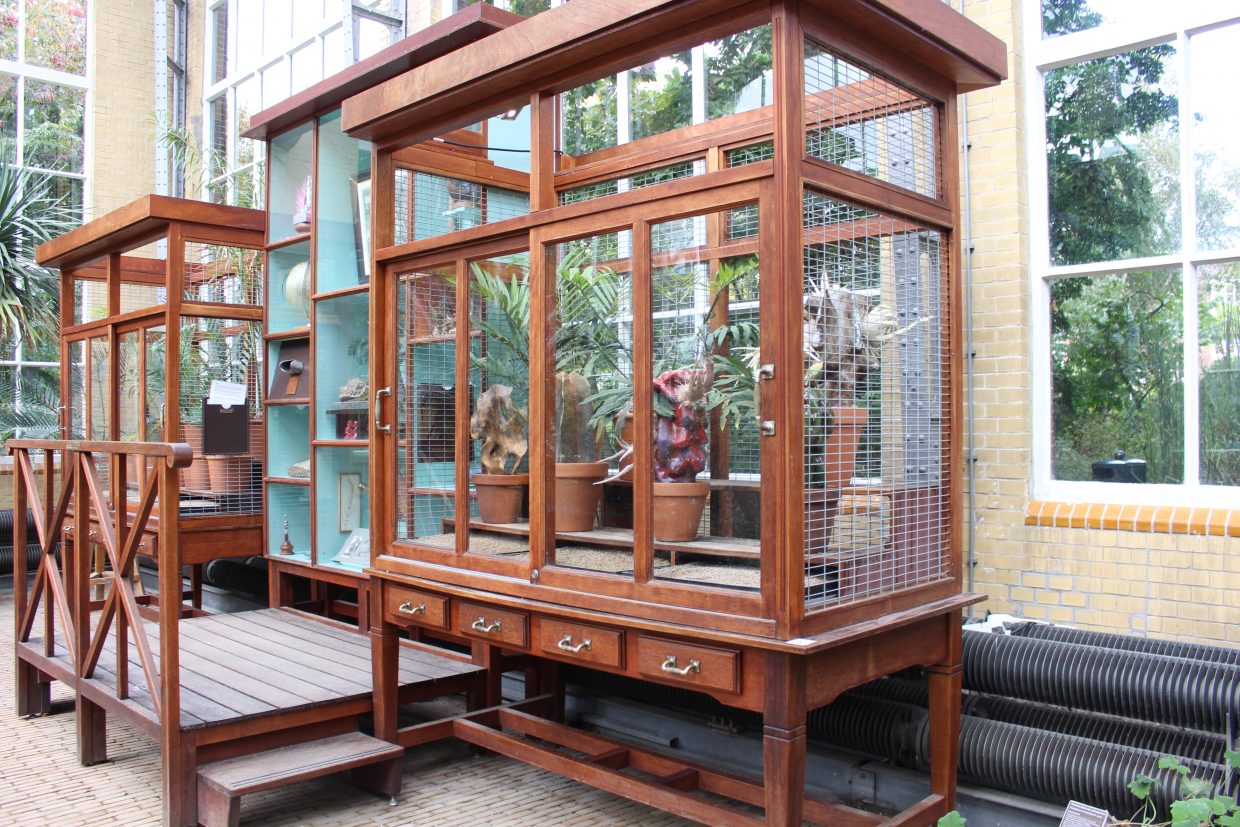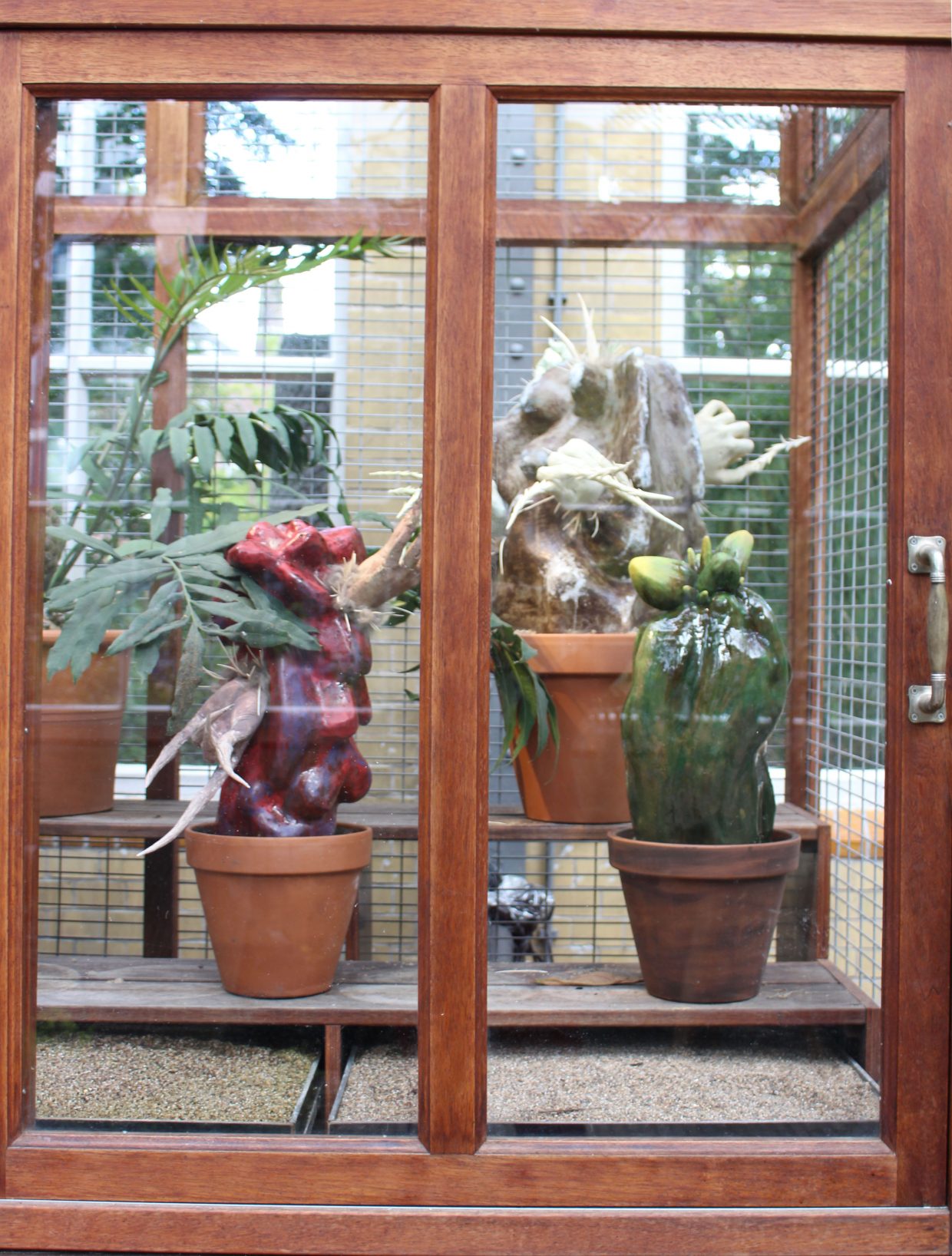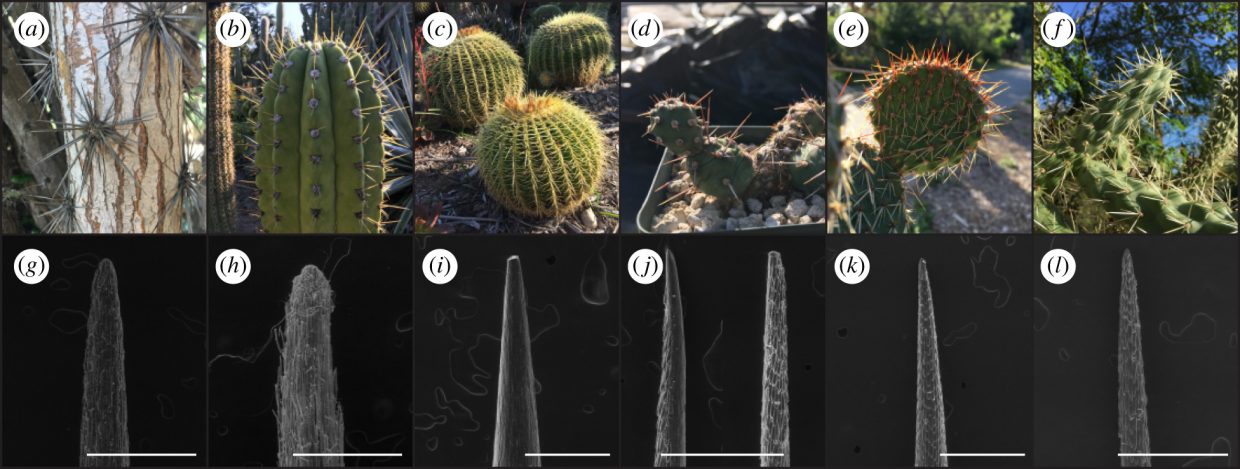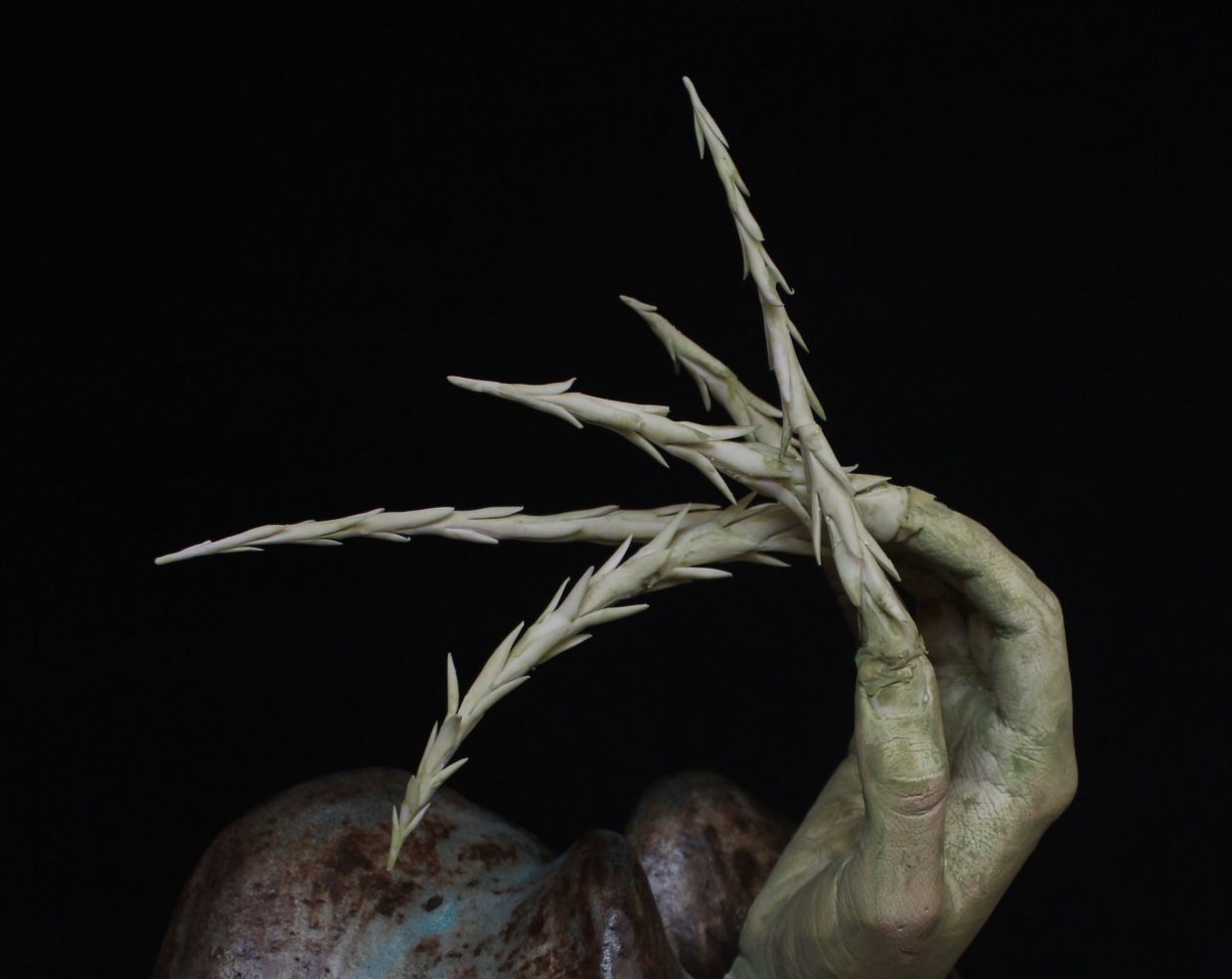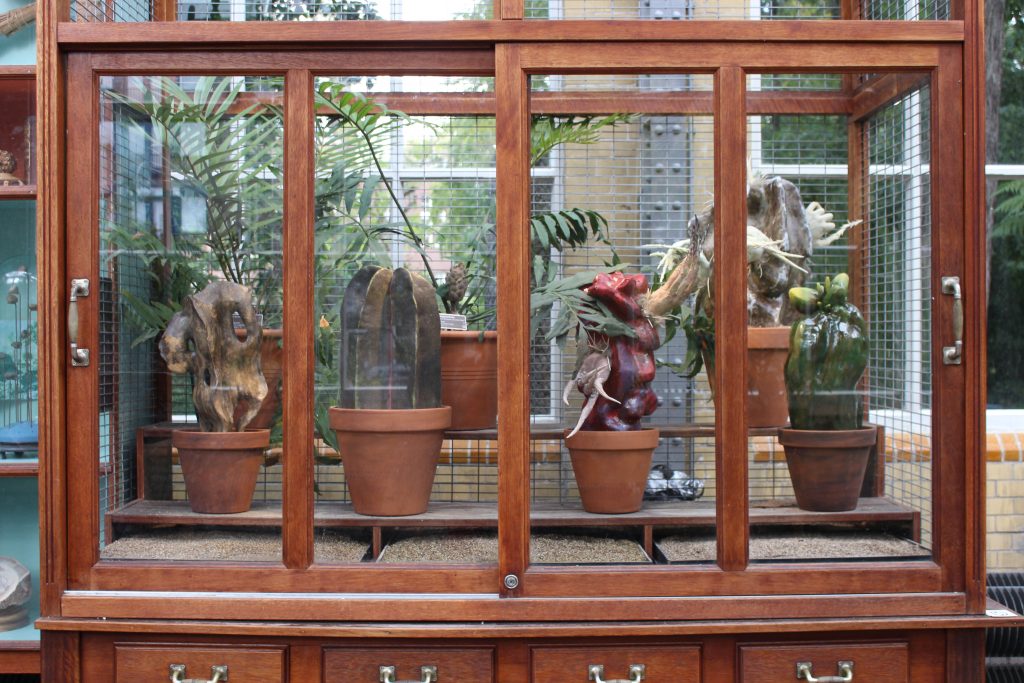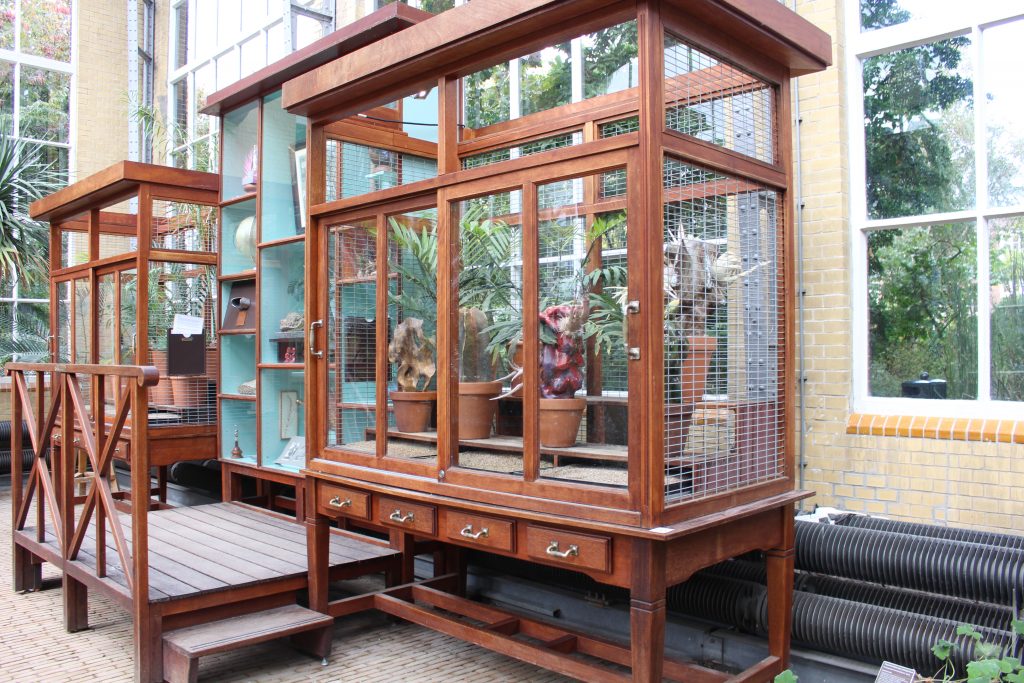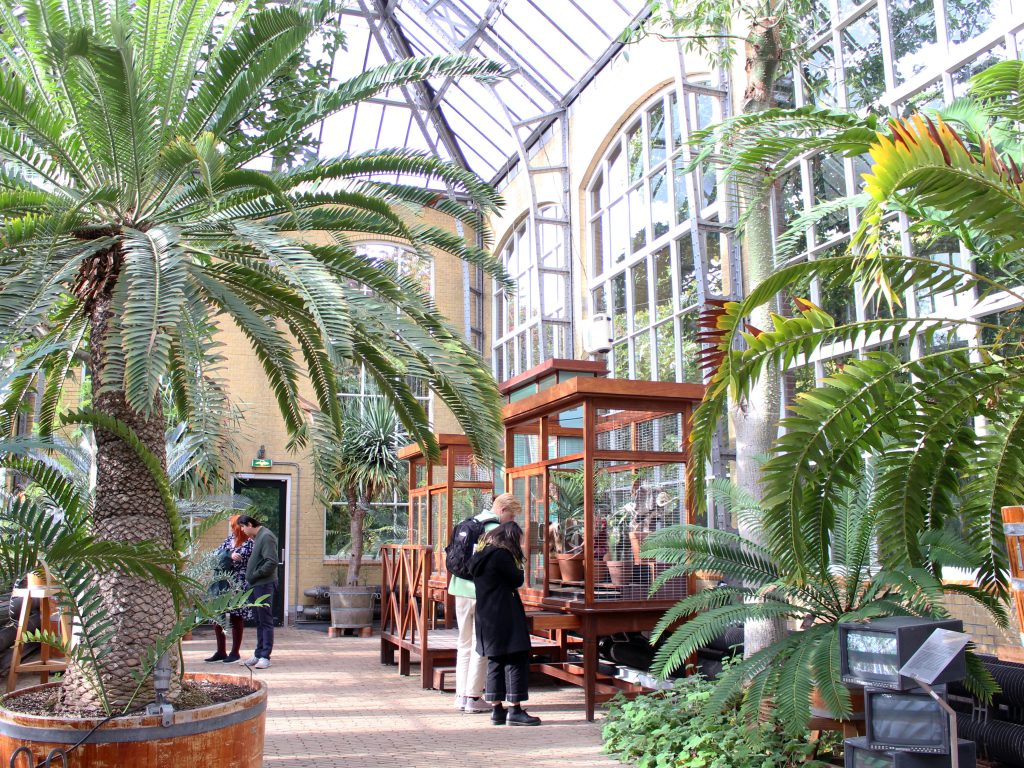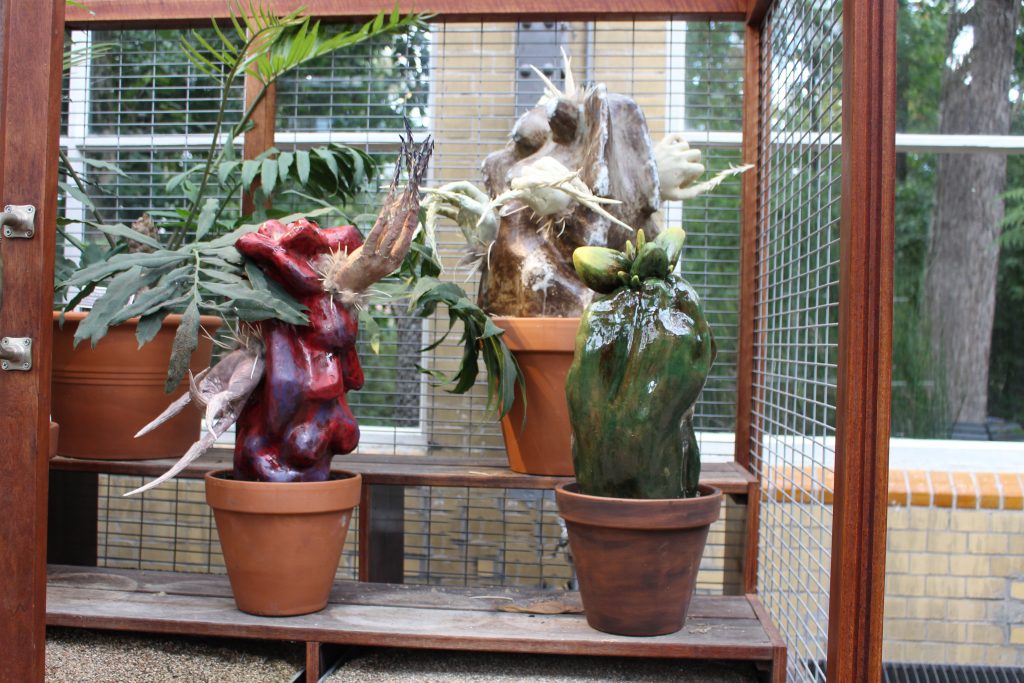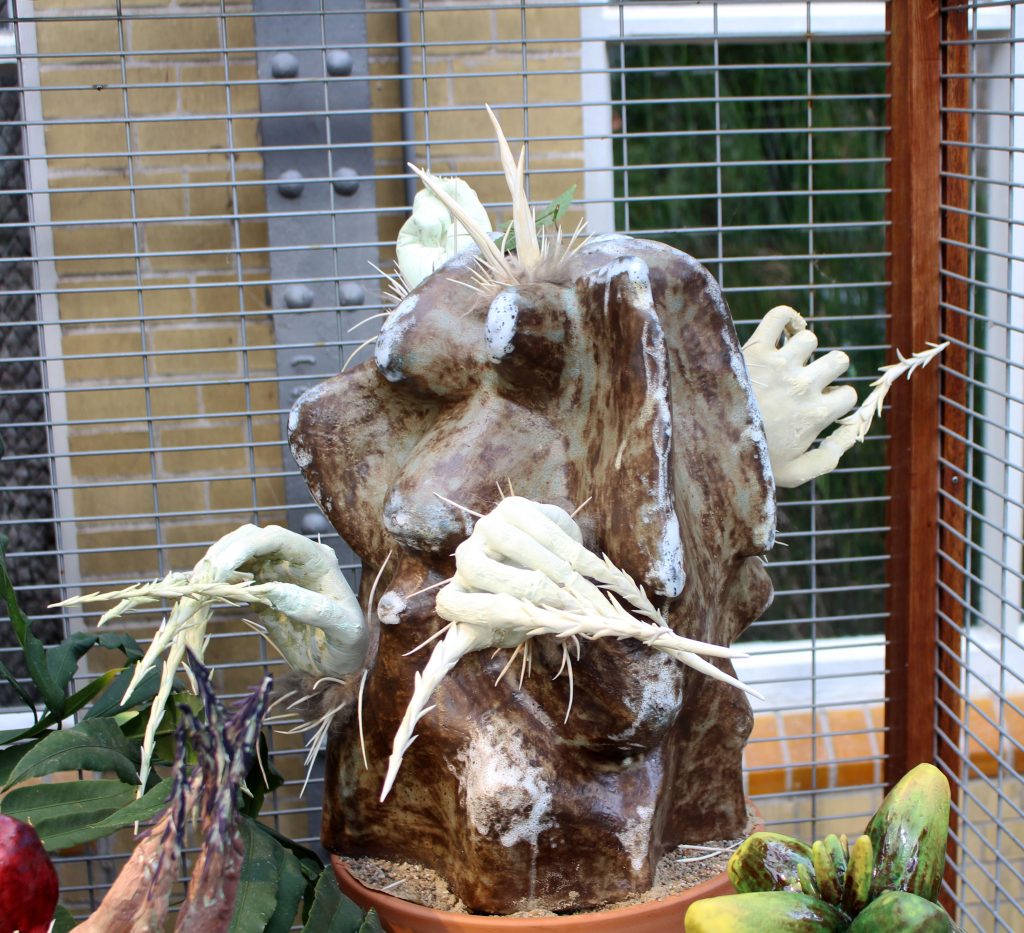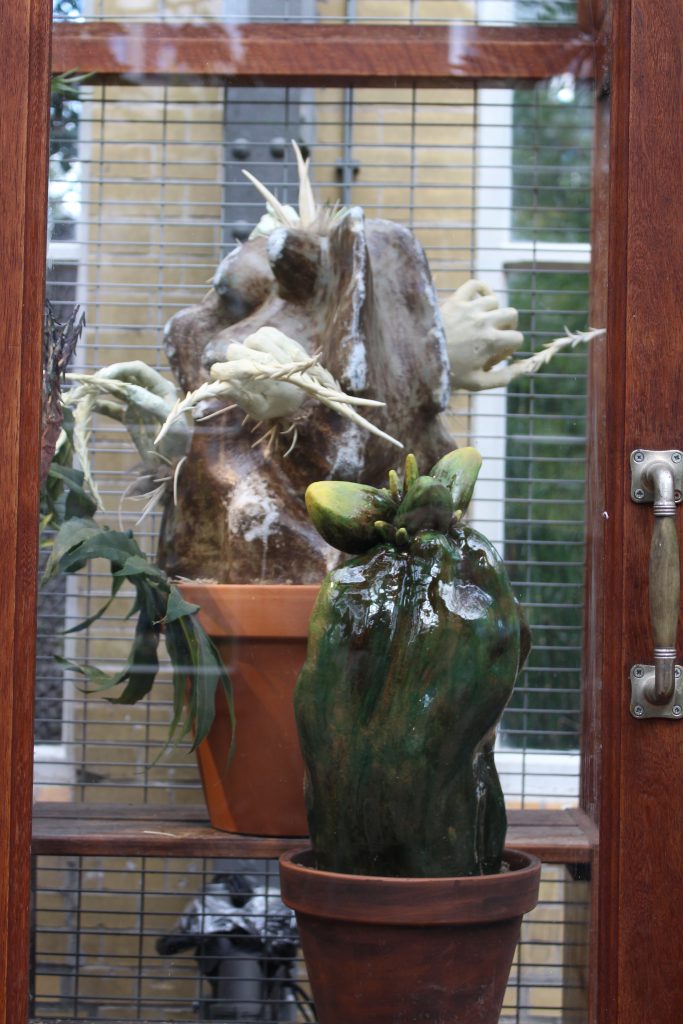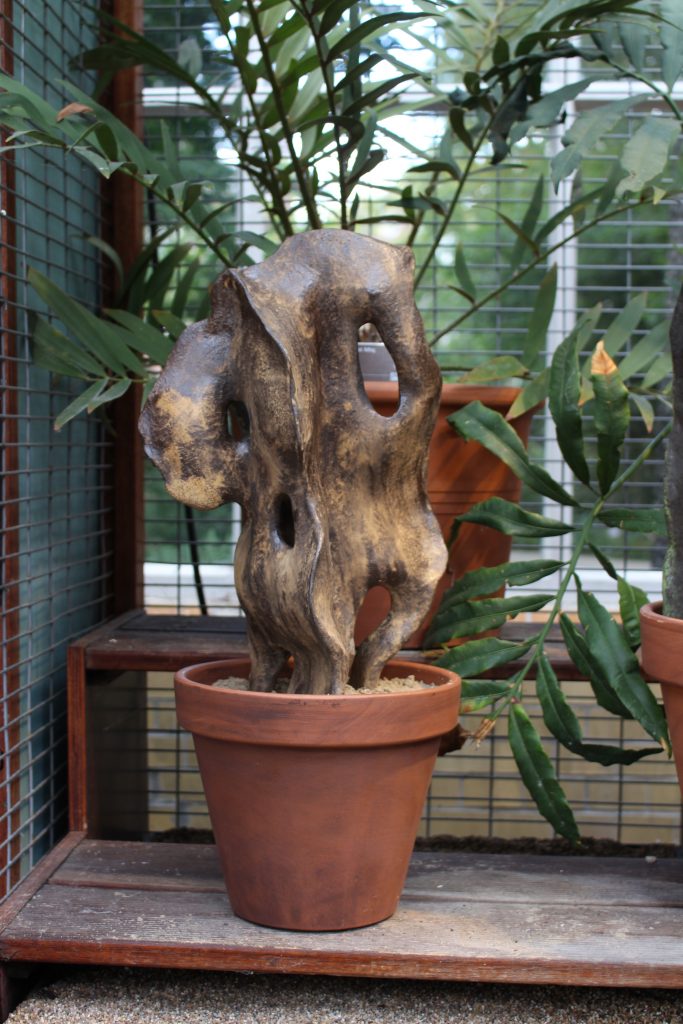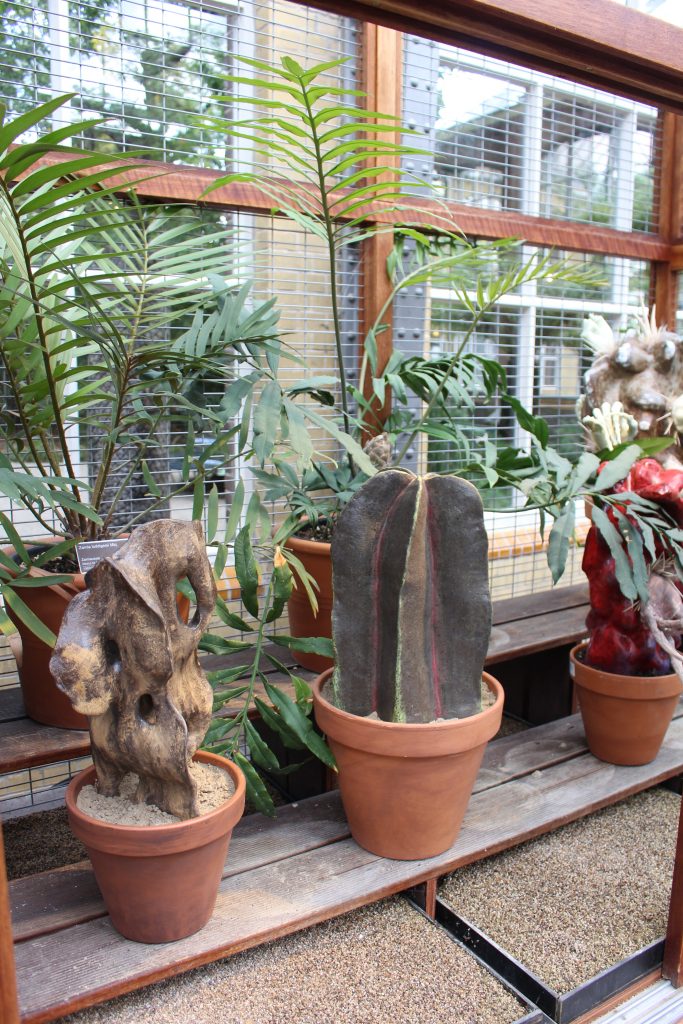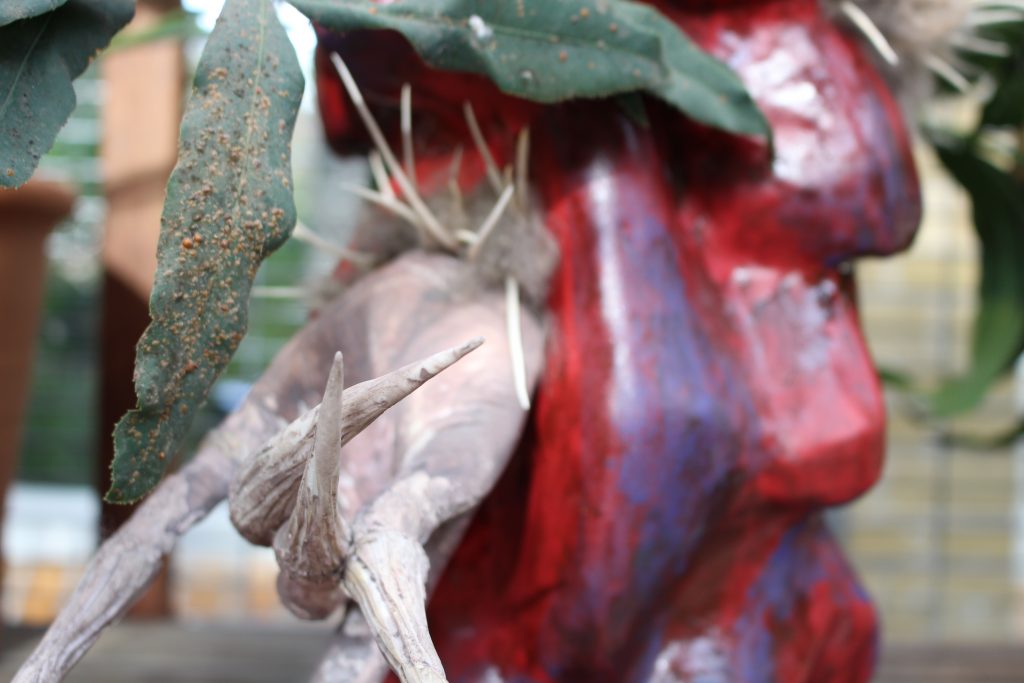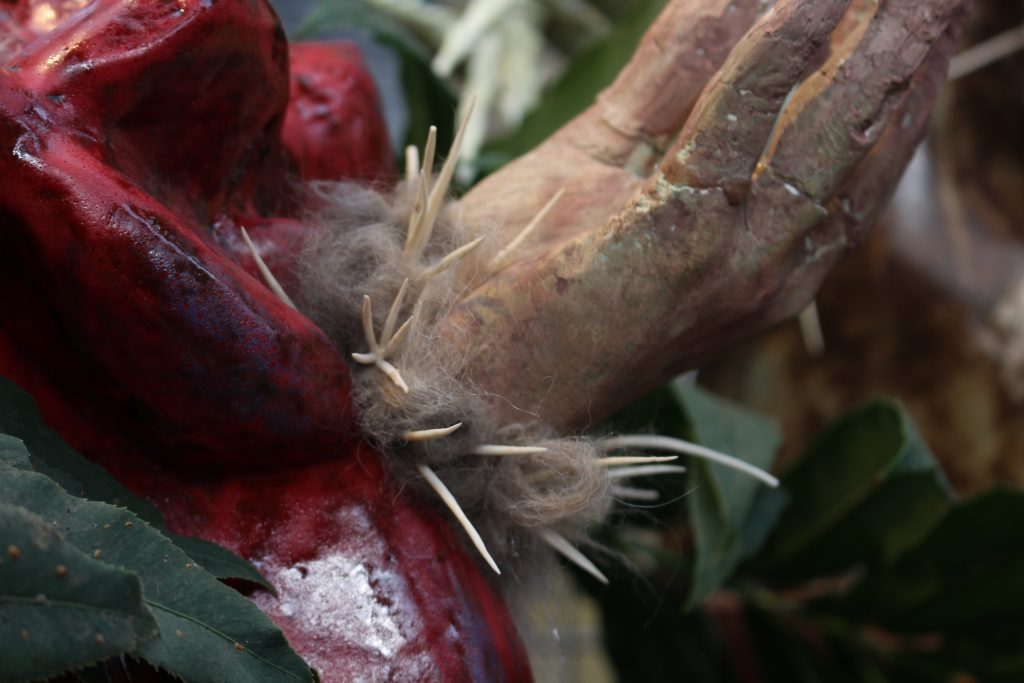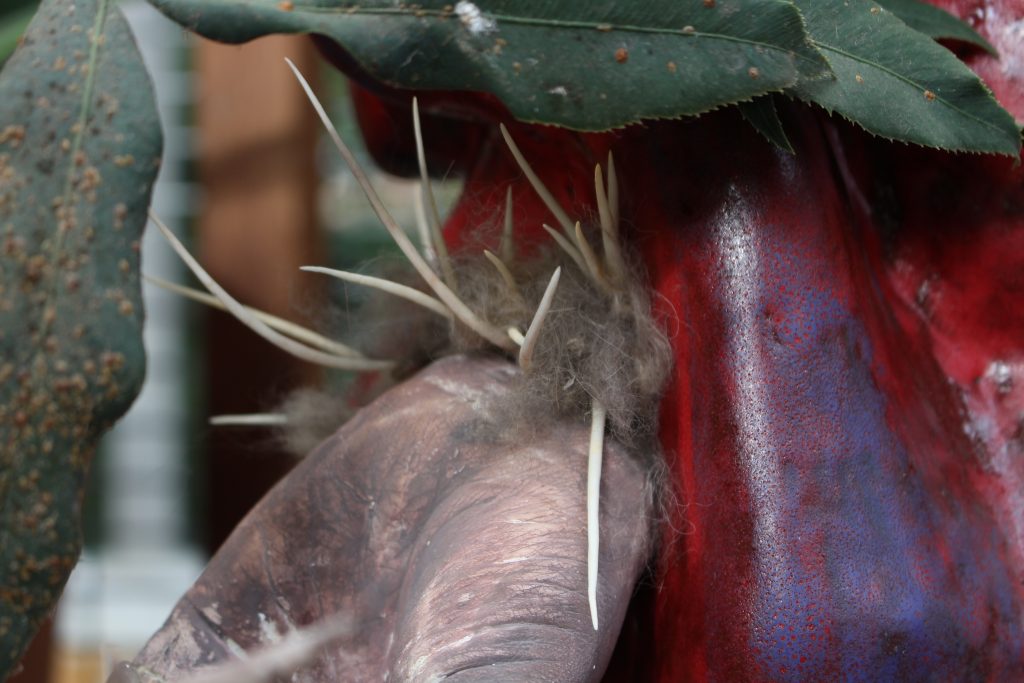This project is inspired by the resilient properties of cacti, which merge with human-like features forming a new alien species surrounded by the heavy wind like soundscapes. Merging delicacy with solidity, and realism with abstraction, the work reflects on the struggle between human desire for welfare and the necessity of sustainability.
Unsustainable, ceramic-sound installation, 2020. Hortus Amsterdam
My work started with the idea of ‘let’s learn from Nature’. We can look at Nature to see how natural phenomena developed properties to survive and sustain themselves in many different environments, and how they constantly improve themselves through their evolution.
I chose to look into cacti specifically, as these species of plants have developed some of the strongest properties relating to sustainability through evolving within the harsh environment of the desert.
Looking into cacti, I discovered that there is an ambiguity in the concept of sustainability. The spines on cacti are not to protect them against animals. instead, they were developed initially to sustain the plant.
Over time it got into much deeper and challenging layers of thoughts for me. The more I thought about the concept of sustainability and human nature, I found the way we talk about sustainability nowadays more and more naive. What we expect from our current ways of dealing with sustainability is not realistic. The current mainstream notion of sustainability is unsustainable.
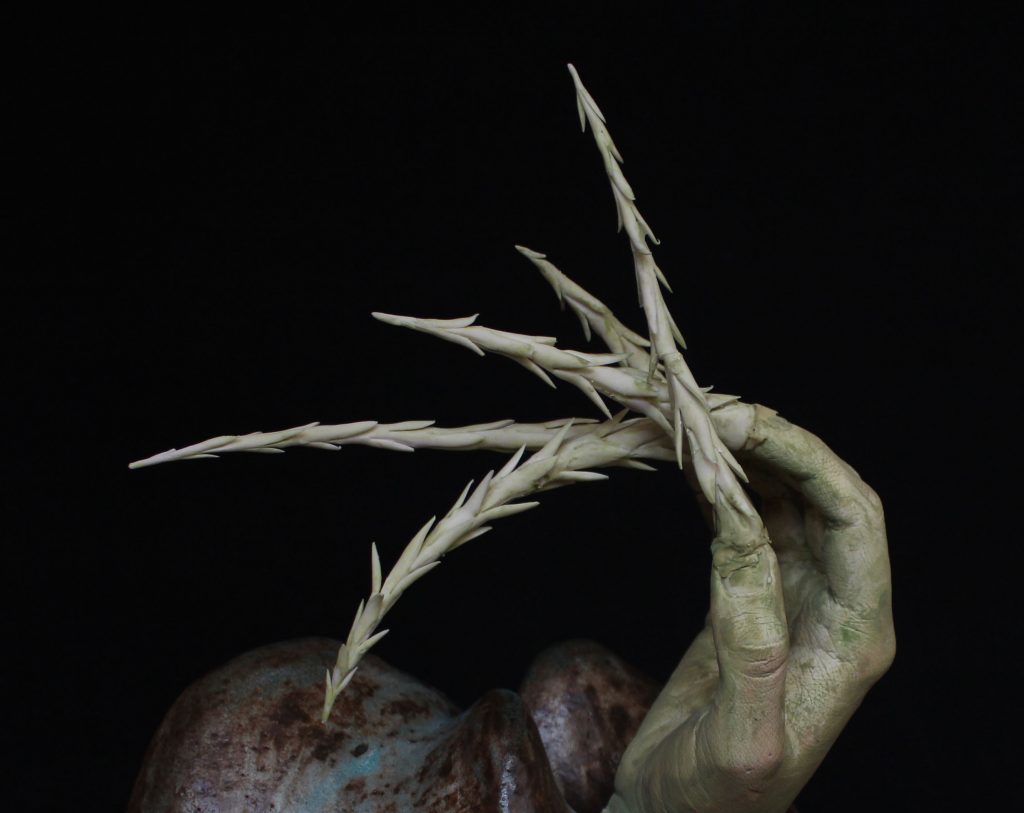
I believe that there is mainly two conflicts between the human nature and the concept of sustainability:
First, I think that there is still a serious problem in how we look at the world; this idea of learning from Nature is still led by a view point that looks at Nature from outside. That basically is not even possible, because you know… we are part of nature, we are Nature. No matter how much we try, we can never look at ourselves from outside. So we will never have a reliable understanding of Nature by treating it as an external phenomena.
Second: I think that our own nature with, it’s desires and weaknesses and needs, won’t allow us to develop the truly right ways to sustain ourselves in harmony with our surroundings, without hurting other parts of Nature and the environment, if we do not fully address our own nature directly.
Our human nature has created our current situation that has proven to be unsustainable.
So, I think, we have to go through this struggle and hard time, that we are just at the beginning of, and learn how to sustain and develop the properties which will help us in this journey, just like other parts of Nature. We have a very difficult time ahead of us, beyond our imagination! I kind of find it simplistic to think that we are going any where by our current minor actions.
The following photos are from my ceramic soundscape installation in Hortus Amsterdam. A collection of five other-worldy species resembling cacti are mounted in pots in a classic cabinet among some rare plants in the monumental palm green house in Hortus.
The speakers and a mini-computer are placed under the cabinet. A real time randomly generative soundscape resembling heavy winds are made by the talented audio-visual artist Bardo Frings.
This project was organized by the art agency MOAM Amsterdam with the theme sustainability, art and nature in 2019 to gather 15 young talents in Hortus Amsterdam to create artworks inspired by brilliant plants of the botanical garden. Due to the pandemic of coved19 the exhibition postponed from March 2020 to Oct 2020 and finally took place in Oct 15th for one month.
Fascinating videos that shows how the barbed spines collect water from tin air. Backward barbs on individual spine even cause the water droplets to move upward.
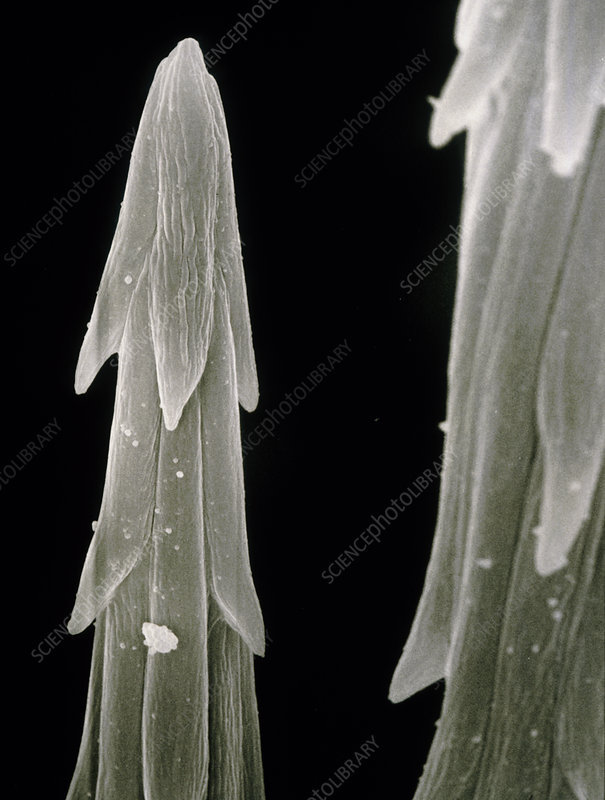
Links:
1) A study on cactus spine anchoring and penetrating ability
2) A fascinating study on fog collection system in cactus spine
3) A research about the strength of cactus spines
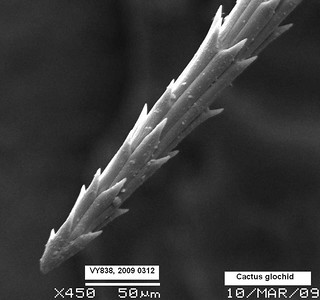
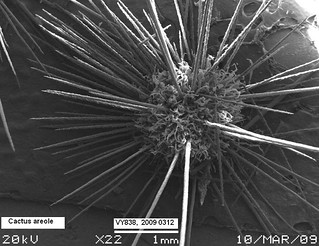
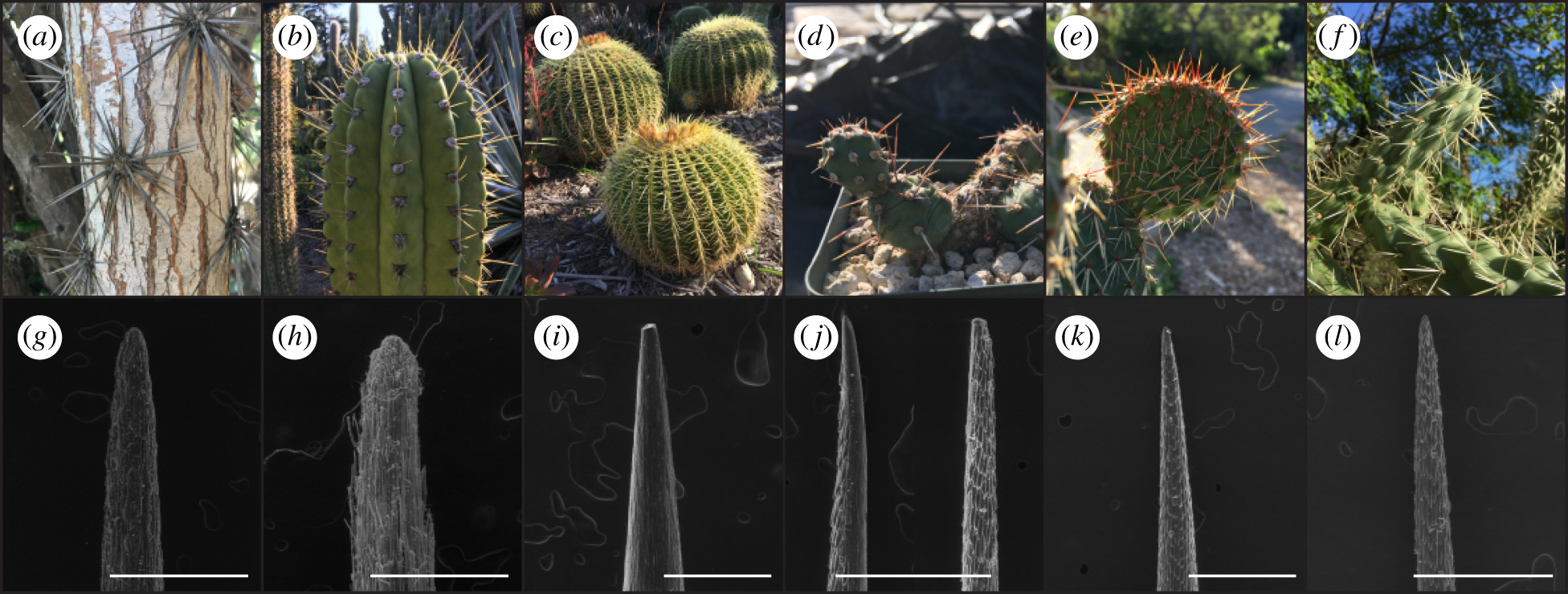

This photo shows how spines on a cactus collect water from air to sustain the plant
